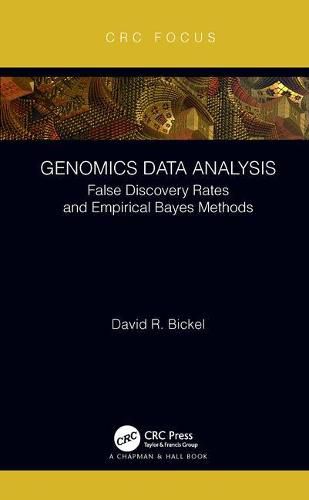Readings Newsletter
Become a Readings Member to make your shopping experience even easier.
Sign in or sign up for free!
You’re not far away from qualifying for FREE standard shipping within Australia
You’ve qualified for FREE standard shipping within Australia
The cart is loading…






Statisticians have met the need to test hundreds or thousands of genomics hypotheses simultaneously with novel empirical Bayes methods that combine advantages of traditional Bayesian and frequentist statistics. Techniques for estimating the local false discovery rate assign probabilities of differential gene expression, genetic association, etc. without requiring subjective prior distributions. This book brings these methods to scientists while keeping the mathematics at an elementary level. Readers will learn the fundamental concepts behind local false discovery rates, preparing them to analyze their own genomics data and to critically evaluate published genomics research.
Key Features:
* dice games and exercises, including one using interactive software, for teaching the concepts in the classroom
* examples focusing on gene expression and on genetic association data and briefly covering metabolomics data and proteomics data
* gradual introduction to the mathematical equations needed
* how to choose between different methods of multiple hypothesis testing
* how to convert the output of genomics hypothesis testing software to estimates of local false discovery rates
* guidance through the minefield of current criticisms of p values
* material on non-Bayesian prior p values and posterior p values not previously published
$9.00 standard shipping within Australia
FREE standard shipping within Australia for orders over $100.00
Express & International shipping calculated at checkout
Statisticians have met the need to test hundreds or thousands of genomics hypotheses simultaneously with novel empirical Bayes methods that combine advantages of traditional Bayesian and frequentist statistics. Techniques for estimating the local false discovery rate assign probabilities of differential gene expression, genetic association, etc. without requiring subjective prior distributions. This book brings these methods to scientists while keeping the mathematics at an elementary level. Readers will learn the fundamental concepts behind local false discovery rates, preparing them to analyze their own genomics data and to critically evaluate published genomics research.
Key Features:
* dice games and exercises, including one using interactive software, for teaching the concepts in the classroom
* examples focusing on gene expression and on genetic association data and briefly covering metabolomics data and proteomics data
* gradual introduction to the mathematical equations needed
* how to choose between different methods of multiple hypothesis testing
* how to convert the output of genomics hypothesis testing software to estimates of local false discovery rates
* guidance through the minefield of current criticisms of p values
* material on non-Bayesian prior p values and posterior p values not previously published